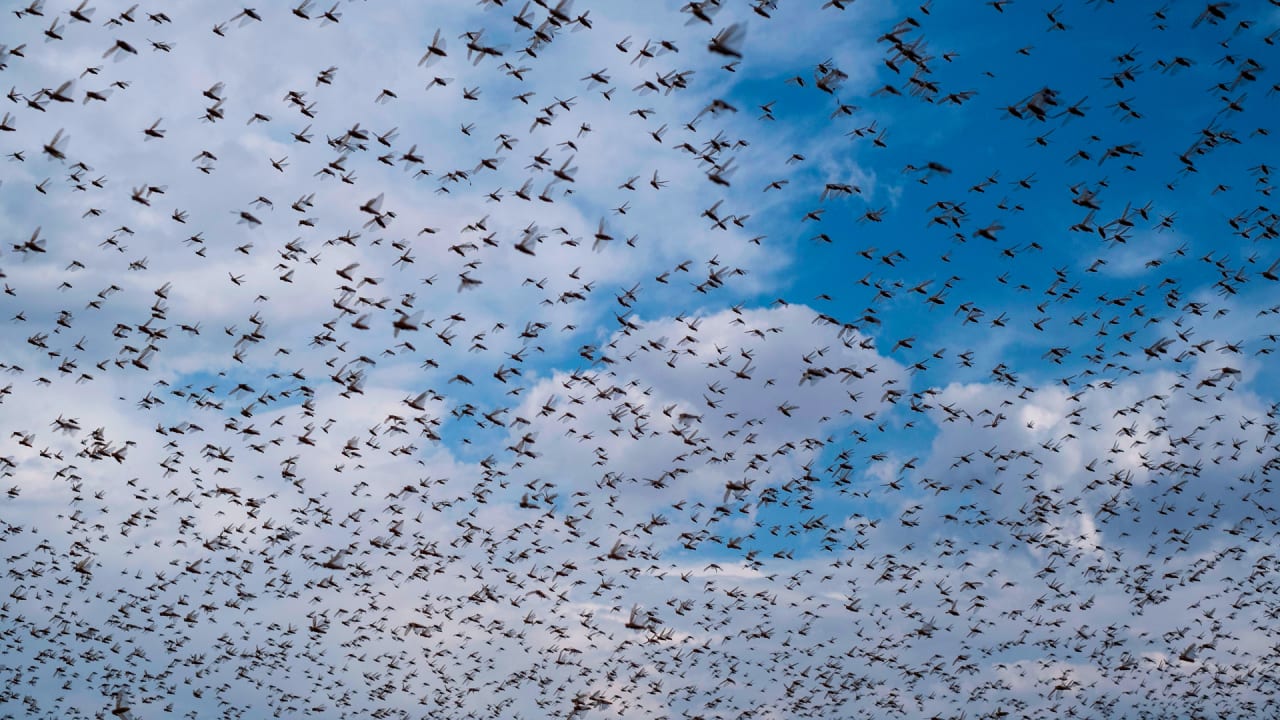[ad_1]

Worries over pesticide use
While South African farmers may now have the tools to locate swarms, conservationists have concerns about how the insects are destroyed in that country. Chemical pesticides, the continued mechanism for doing so, contrasts South Africa with the environmentally-sensitive pest control methods used in other African nations that now use biopesticides.
During the locust infestation earlier this year in Eastern Cape, the national government supplied AgriEC with two helicopters to treat the swarms with chemical pesticide, specifically Sumi-Alpha and Deltamethrin, and also provided 16 “blowers” (portable units that teams of workers carried on their backs to spray the insects).
“We had two situations where people used smoke instead, but it didn’t actually help a lot, so the main thing [used] was poison,” said Pretorius, noting that in some cases fires and smoke help repel locust swarms, though the insects then simply fly to another area.
The spraying of toxic pesticides on fruits or vegetables intended for human consumption is banned in South Africa, so farmers often utilize helicopter rotor downwash to corral flying swarms pushing them into unplanted spaces, where the insects can be sprayed, and their carcasses left to decompose on open ground.
One hope is that EarthRanger technology will allow farmers to quickly track down hoppers and spray them when “not so active,” said Pretorius, requiring less pesticide.
AgriEC believes that chemical pesticide, once sprayed, only contaminates the ground for two weeks. However, new research released in May 2022 recommends against chemical pesticides in favor of nontoxic biopesticides, such as the fungus Metarhizium acridum, to kill locusts.
Academics led by Samuel Kamga of Cameroon’s University of Yaoundé have found that once early-warning software forecasts a locust invasion, experts can then calculate an optimal time when temperature and humidity are just right, so the applied M. acridum fungus will thrive. Ideally, for prevention, fungus-based biopesticide should be sprayed across areas likely to be affected ahead of a swarm’s arrival.
Kenya-based Greenpeace Africa Campaign Officer Claire Nasike also supports the use of M. acridum-based biopesticides to control swarms. She says that, depending on their chemical properties, some pesticides currently in use last much longer than two weeks in soil, persisting and harming microorganisms that make soils fertile for crops.
She noted that toxic-chemical pesticides can travel long distances via surface runoff and then contaminate water sources they flow into. “Some can leach into groundwater sources, eventually contaminating them and reducing the available freshwater for use. Some, such as deltamethrin, which is frequently used, have the ability to harm bees (which are essential in food production), and fish.”
M. acridum, on the other hand, only kills locusts and doesn’t contaminate the environment. “It can be used to kill the locust swarms,” says Nasike. “This method has been proven to work in countries such as Tanzania and Madagascar, provided it is applied in good time. Toxic [chemical] pesticide use should not be a knee-jerk reaction to locust problems that can be solved with biopesticides and proper planning.”
In South Africa, farmers eagerly await September to see how well their locust swarm early-warning system works, and whether the insects can be effectively controlled.
[ad_2]
Source link

